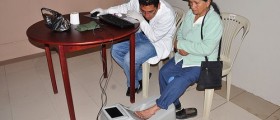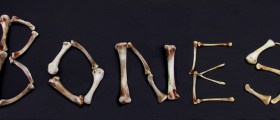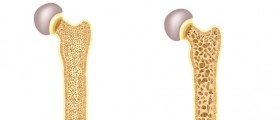Rickets is a disease characterized by softening of the bones. This disease primarily strikes children, and it is among most frequent childhood diseases in many developing countries.
Rickets occurs as a result of deficiency in vitamin D. Insufficient intake of calcium is also associated with this disease. Rickets is usually resulting from famine or malnourishment during the early stages of childhood. When such a disease affects an adult, doctors usually refer to it as to Osteomalacia.
Osteomalacia is also distinguished as a disease in which patient’s bones start softening. As in children, the disease is triggered by low levels of vitamin D. Osteomalacia is a serious disease characterized by bones that are more likely to bow and fracture than are healthy bones.
- The incidence of nutritional rickets is rising globally, and hospitalization is increasing even in high income countries. The underlying calcium deprivation does not just manifest as reduced bone mineralisation (rickets and osteomalacia) but also as hypocalcaemic seizures, tetany and dilated cardiomyopathy including cardiac failure and death.
- Undiagnosed nutritional rickets has also been implicated in childhood mortality. The prevalence of osteomalacia histologically at post-mortem in adult Europeans is as high as 25%. Therefore, clinically evident nutritional rickets is only the tip of the iceberg, and the true burden of subclinical rickets and osteomalacia remains unidentified.
- Calcium deprivation is caused by two factors, low dietary calcium and vitamin D intake. Vitamin D deficiency is pandemic in Europe, in winter affecting nearly 18% of the population, but with 3–71 times higher risk in dark-skinned ethnic minority groups. The increasing prevalence of vitamin D deficiency mirrors the trends in nutritional rickets, dark-skinned individuals being at a higher risk.
- In developed countries, the prevalence of nutritional rickets is several hundred-fold higher in dark-skinned immigrants compared to native populations. This means conditions that are rare in the host country are common in ethnic minorities. The underlying endemic vitamin D deficiency in these ethnic risk groups is exemplified by a population-based study in 2225 school children and 830 adults in Saudi Arabia, demonstrating that 92% of girls and 79% of boys, and 75% and 74% of adult women and men, respectively, had 25OHD levels below 50 nmol/L (20 ?g/L).
Causes of Osteomalacia
The primary cause of bone softening in adults is a defective bone mineralization. This is what distinguishes osteomalacia from a similar disease known as osteoporosis. Osteomalacia occurs as a result of deficient bone-building process, while osteoporosis occurs as a result of weakening of previously constructed bones.
There are many causes of osteomalacia, but most of them ultimately depend on vitamin D. Vitamin D deficiency may occur whenever an individual has insufficient vitamin D intake, or does not get enough exposure to sunlight. Our body needs ultraviolet light to convert one form of cholesterol into vitamin D. Whenever a person doesn’t get enough sun exposure, there is an increased risk of developing vitamin D deficiency. People who wear very strong sunscreen, remain covered while outside or live in areas where sunlight hours are short or the air is smoggy, are at increased risk.
Osteomalacia may also occur as a side-effect of certain medical treatments or medical conditions. For example, if an individual has a celiac disease, the lining of the intestine is damaged and doesn't properly absorb nutrients such as vitamin D. Problems with kidneys or liver can also get in the way with one’s ability to process vitamin D. Some drugs used to treat seizures, including phenytoin and Phenobarbital, can cause osteomalacia.
Symptoms of Osteomalacia in Adults
Osteomalacia normally shows no symptoms in the early stages. Sometimes, diagnostic tests, such as x-rays, can detect the presence of the disease. When the disease gets to a more severe stage, the patient may notice bone pain, especially in the lower spine, pelvis and legs. Weakness in the muscles is also present and it usually manifests as a decrease in muscle tone, general muscular fatigue and reduced ability to move.Treatment of osteomalacia
Osteomalacia is usually treated with vitamin D supplements. Replenishing the levels of vitamin D in the body helps improve the signs and symptoms of the disease in just a couple of weeks. The treatment usually involves an intake of 10,000 IU weekly of vitamin D for four to six weeks.


















Your thoughts on this
Loading...